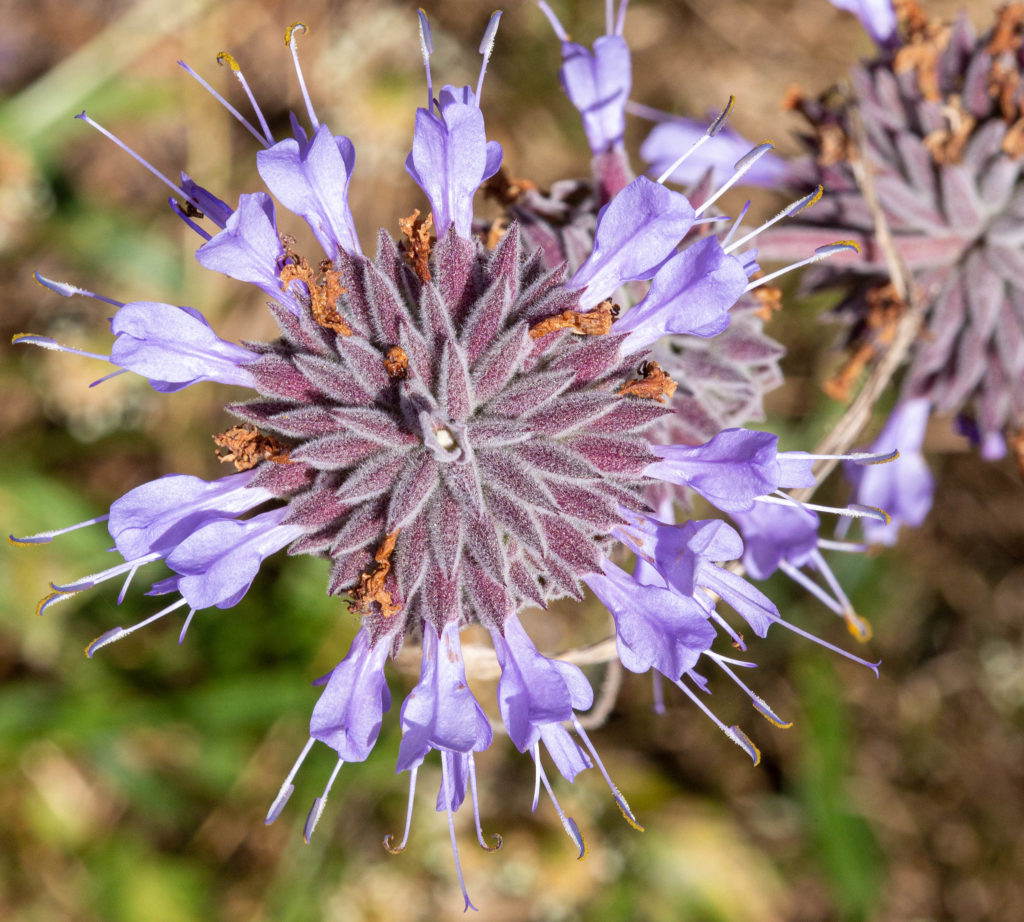
We dug up our lawn over the last two or three years after a long period of drought-induced neglect that had turned the grass patch into a weed patch. In its place we have created what I call “Kate’s Meadow,” a semi-tidy but very colorful collection of mostly native flowering plants.
I went out the other day to take pictures of one of the plants, a black sage that’s been attracting lots of bees. I’ll occasionally post my pictures of plants and animals on Flickr, and when I do, I’ll look up the species name. I was curious when I saw that honey bees, Apis mellifera, share an epithet with black sage, Salvia mellifera (the epithet being the second word in the binomial genus/species name).
What’s the explanation for the shared epithet?
Apis is Latin for bee, and mellifera is Latin for “honey bearing.” Swedish taxonomist Linnaeus designated European honey bees as Apis mellifera, honey-bearing bee, in the 18th century. According to some sources, he quickly regarded that name a mistake and attempted to change it to Apis mellifica — honey-making bee. But under later-adopted rules of scientific nomenclature, the older, “mistaken” name takes precedence.
Black sage came by the designation Salvia mellifera thanks to U.S. botanist Edward Lee Greene, a member of the University of California faculties in the 1880s and ’90s. In a series of papers published under the title “Pittonia,” Greene set out to correct what he viewed as the misclassification of North American sages, adding them to the genus Salvia and subtracting them from Audibertia, used by the botanist George Bentham in the 1830s.
The only clue I can readily to Greene’s use of mellifera as the epithet for this species is his comment in describing the black sage as “one of the principal bee-plants.”

